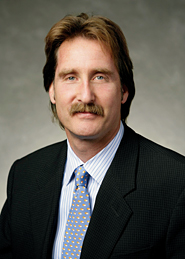When Credit Suisse’s new ECN debuts in March, it should find a ready group of customers. Apparently, the buyside believes there’s room in the crowded field of trading destinations for another market center that caters specifically to long-term investors.

Credit Suisse’s ECN, called Light Pool, will come with a message: No opportunistic traders allowed. This means that firms with short-term alpha strategies–such as many high-frequency traders–won’t be welcome in the ECN.
And that suits Ted Oberhaus, equity trading director at the asset management firm Lord Abbett, just fine. He is among several traders on the buyside with whom Traders Magazine spoke who are eager to check out Light Pool and get under the hood to give it a test drive. In theory, Oberhaus said, building a market center that prevents HFTs from stepping between the negotiations of two buyside traders is a good idea.
"Anytime you pull together just long-only investors, it’s great for asset accumulation in the asset manager’s business model," Oberhaus said. "So, conceptually, it works for me."
One large asset manager said he also wants to hear more. He’s scheduled to meet with Credit Suisse representatives soon to learn about how Light Pool works. He said he definitely sees a need for what Credit Suisse says the product offers.

Light Pool is currently in beta testing. Credit Suisse’s plan to launch the ECN was first reported in a story last week by Bloomberg News.
Those employing high-frequency trading strategies are welcome in Light Pool, too, so long as they behave themselves accordingly, said Dan Mathisson, head of Advanced Execution Services at Credit Suisse. At its simplest, this means they can’t pick off other investors’ orders.
"If a trader is picking off other clients, then they’ll get classified an opportunist, and they can no longer trade on the system," Mathisson said.
Credit Suisse will use an objective quantitative formula to determine the intent of those who use Light Pool. Once a customer logs 500 fills, AES will measure the short-term alpha–a calculation of excess return–from every fill. Clients found to have short-term alpha are labeled "opportunistic." Clients who have flow that appears to be information-free, and that doesn’t display gaming behavior, get classified as "contributory" and may trade uninhibitedly, Mathisson said.
If a client is classified as opportunistic, he cannot have a direct connection or send orders anymore directly to Light Pool, Mathisson said. And because a displayed order under Regulation NMS must be accessible, the opportunistic trader would have to access the quote via order delivery from one of the exchanges. That adds delays and costs, Mathisson added.
"It’s expensive and it’s slow to take a Light Pool order if you’re not connected," Mathisson said. "They can take a displayed offer through an exchange. But they won’t be able to trade versus any hidden liquidity, and they won’t be able to post a bid or an offer."
Once inside Light Pool, it’s a straight matching engine with price-time priority for those providing liquidity. Credit Suisse did not reveal the pricing model it has planned for the ECN.
Another large asset manager who uses AES algos–and has seen Light Pool in action–said he’s confident the metric Credit Suisse uses for its clientele will work and bar those informed traders who would otherwise pick off his orders.
"It does increase my comfort level to know they’re doing everything they can to try to please who’s in there," he said. "I want to make sure that they’re doing what they can to kick those people out who are short-term-oriented and trying to take advantage."
AES expects to leverage its algos to get more order flow moving through it. In this respect, it’s applying a similar tactic to its dark pool sibling, Crossfinder. It has worked for the crossing engine: Crossfinder now matches 2.76 percent of all consolidated equities volume, according to the latest dark pool numbers assembled by Rosenblatt Securities.
Yet Credit Suisse doesn’t expect to match the volume numbers other former ECNs, such as BATS and Direct Edge, attained. "If we can create a high-quality execution experience for institutional investors, there will be a niche for it, and we’ll get a few points of market share," Mathisson said.
In a recent commentary, Rosenblatt Securities looked to explain the context in which Light Pool is coming to market: "But Light Pool, as [Credit Suisse] is calling its planned venture, would be the first fully lit market center we know of that, through its structure and rule set, would attempt to exclude wide swaths of the equity-trading universe from effectively accessing it. There’s no indication that Light Pool has been approved by the [Securities and Exchange Commission], and we expect an active public debate about the proposal in the coming weeks."
From an operational standpoint, Crossfinder and Light Pool will share the same technology, client service, FIX connectivity and compliance teams. But Light Pool will be a completely separate book, with no interaction with Crossfinder, Mathisson said.
Also, AES will not publish Light Pool trades on private data feeds. Exchanges and other ECNs publish data feeds showing their trades. Subscribers can see those data feeds faster, before they appear on the consolidated quote system.
"That’s a significant difference," Mathisson said. "By only publishing fills on the consolidated tape, nobody gets an early look at what happened there. That’s something that will hurt business with the high-frequency-trading-type accounts."



